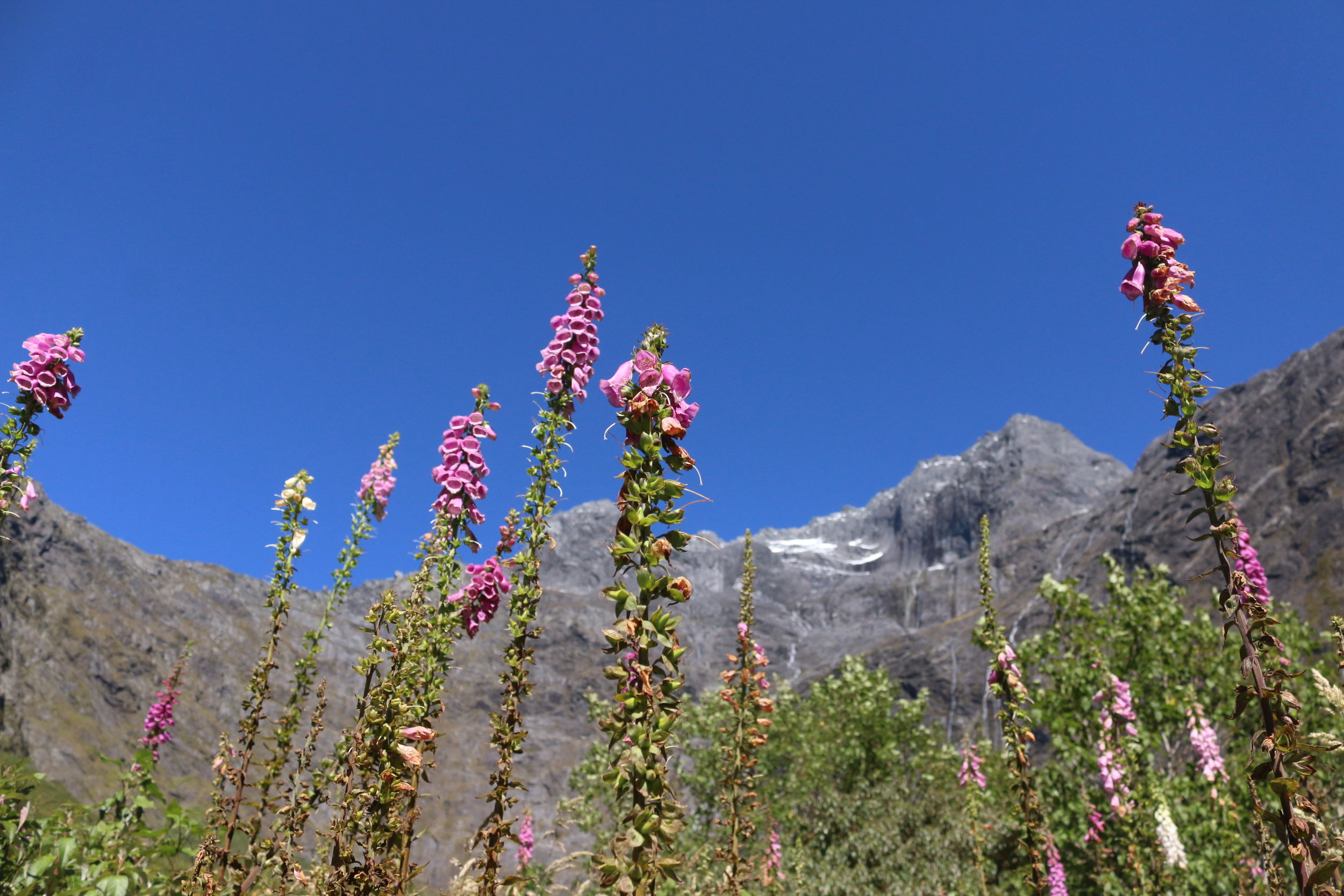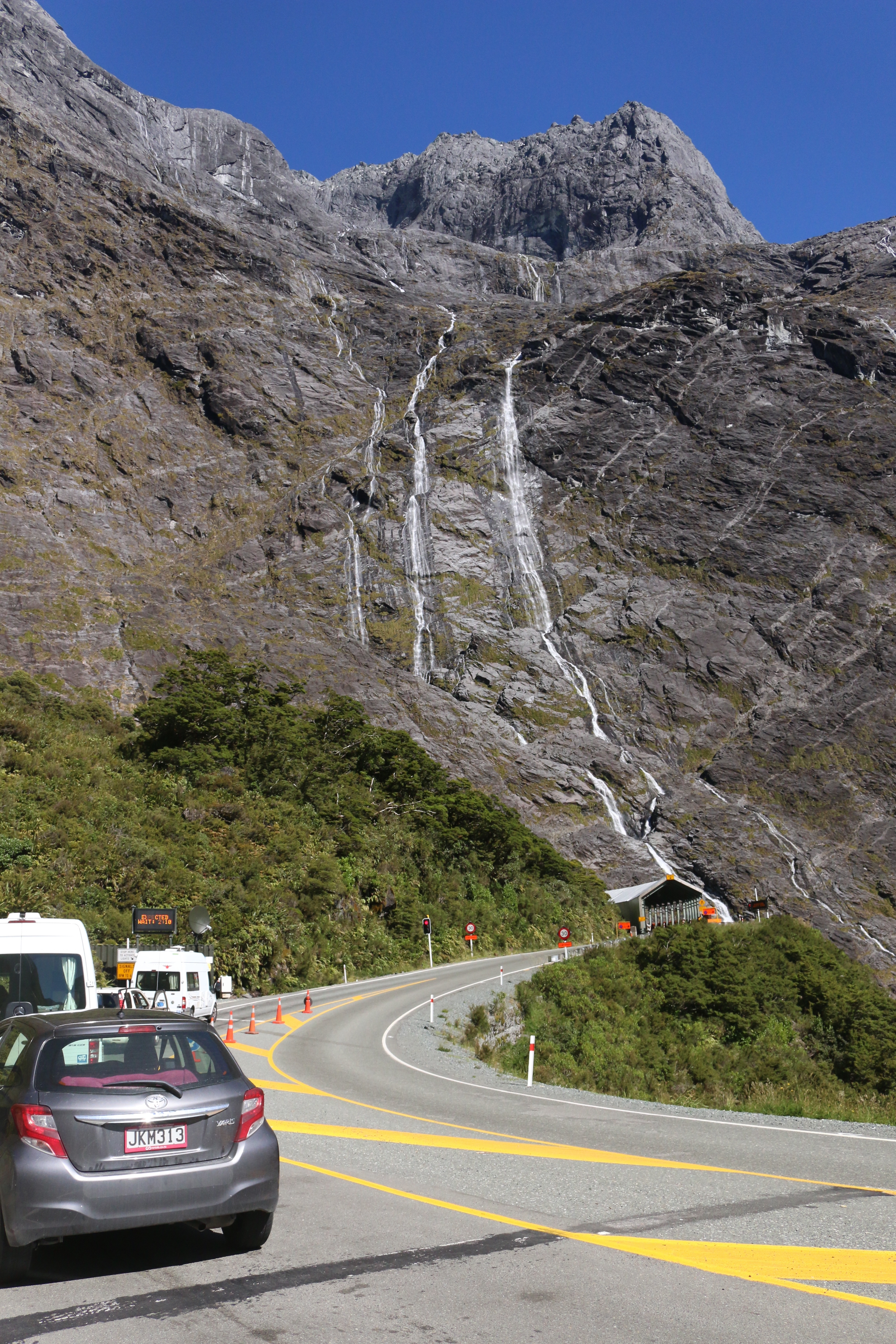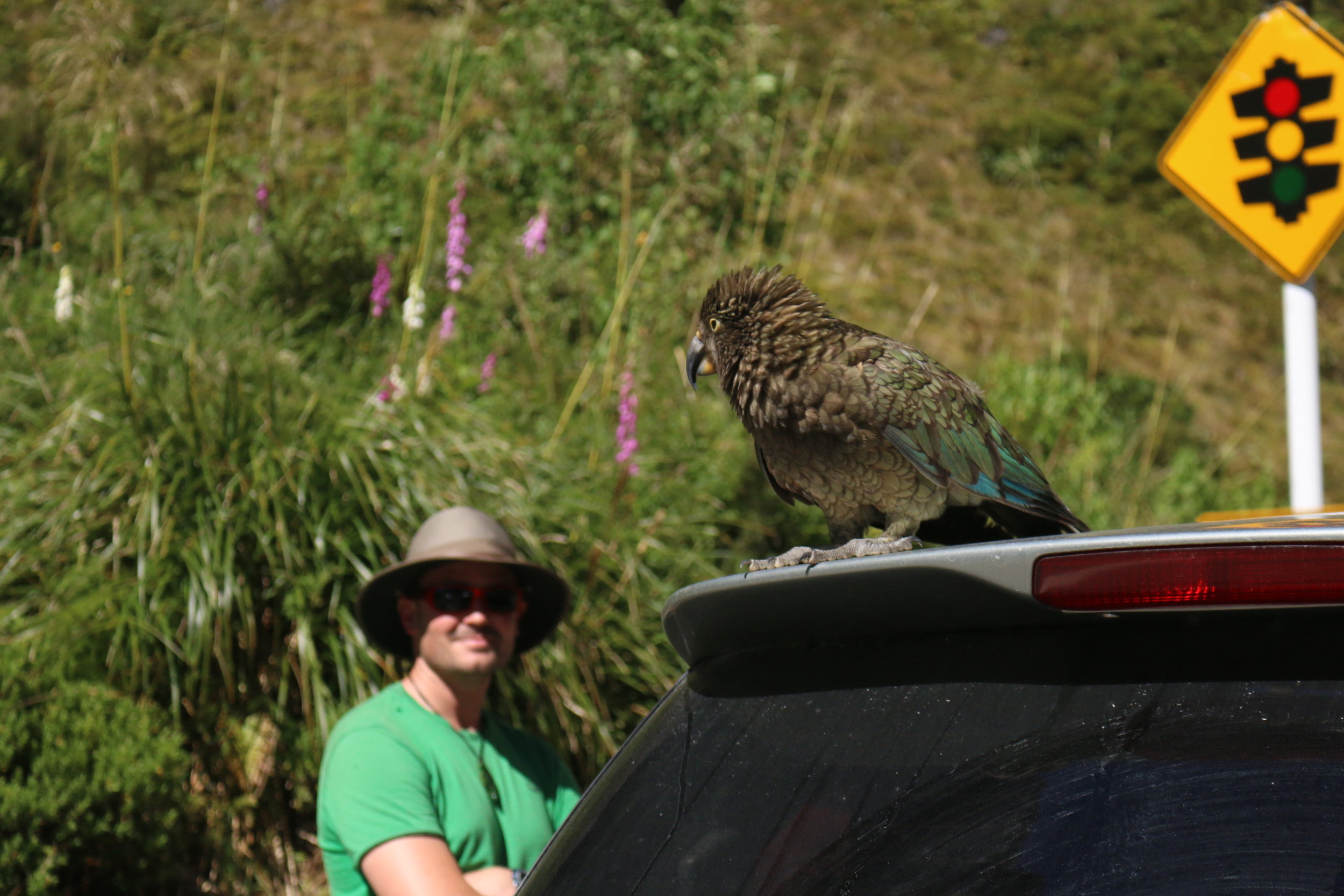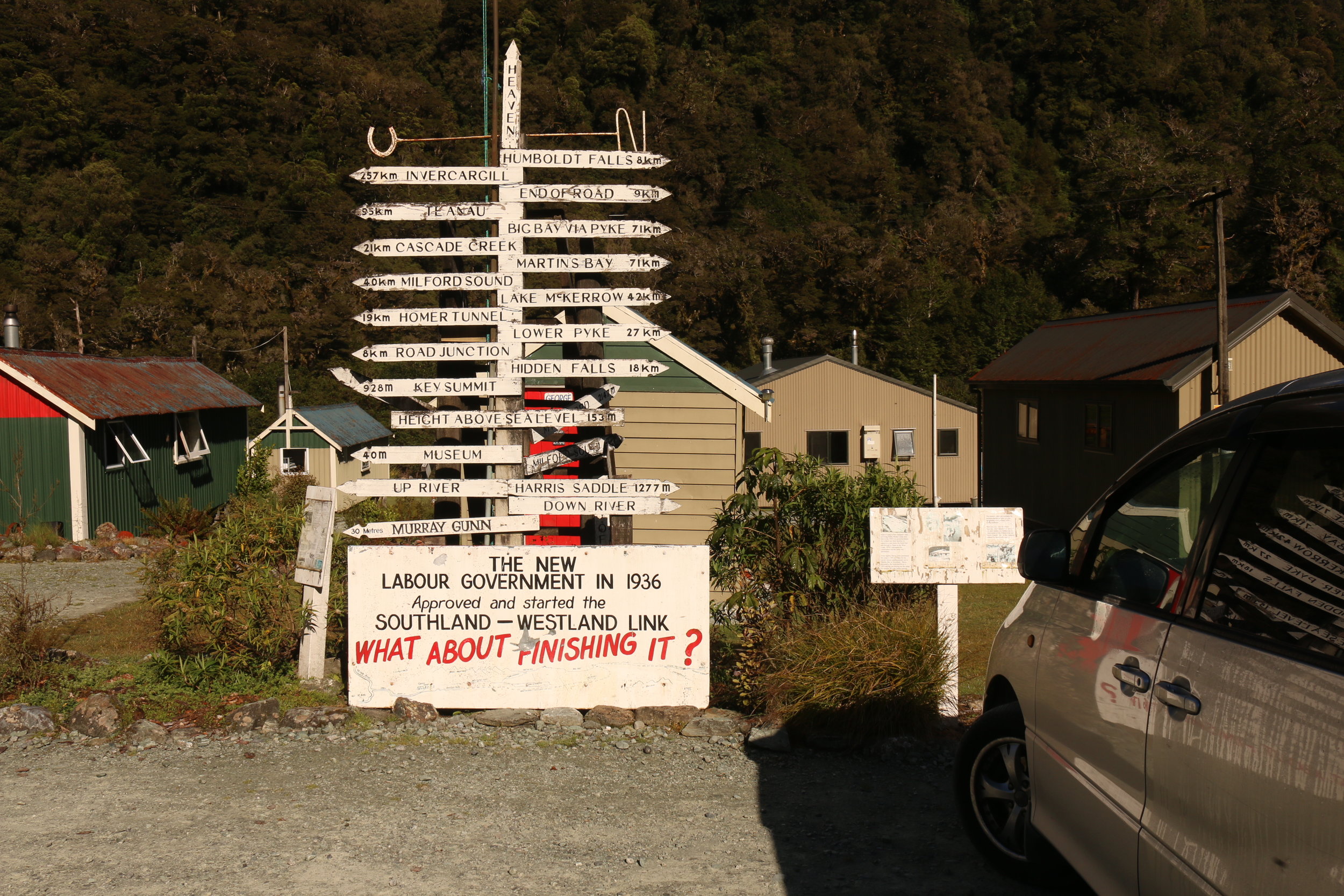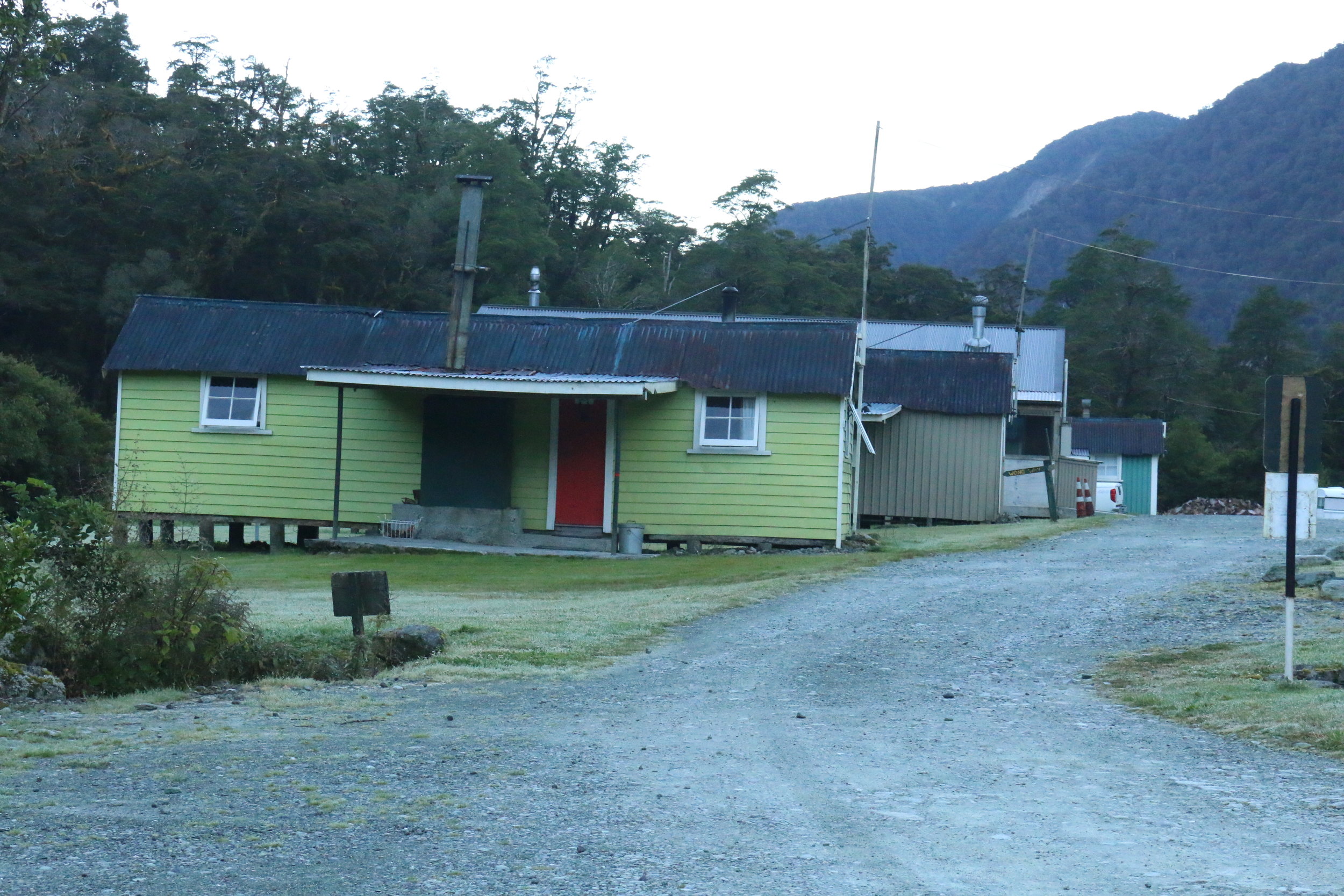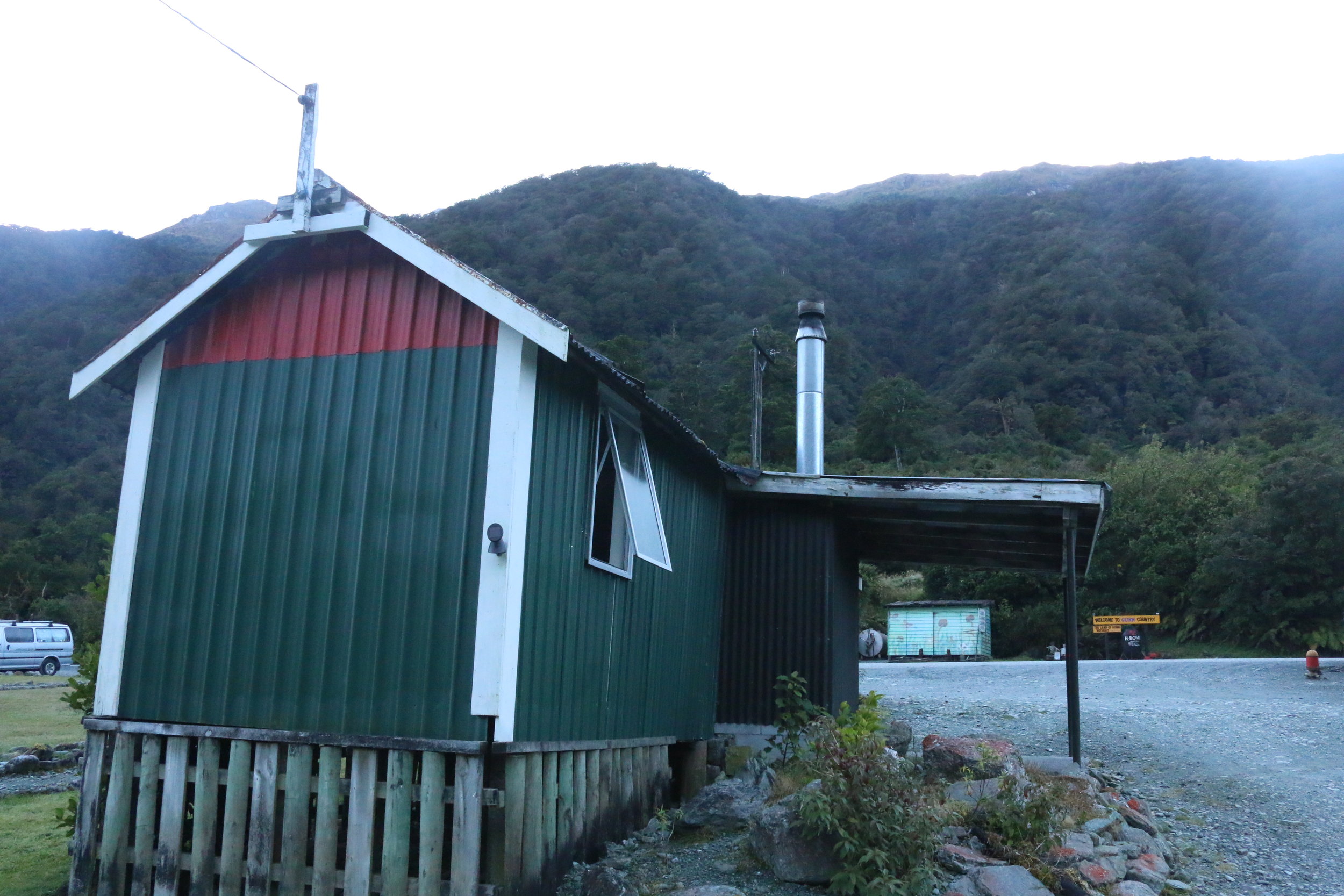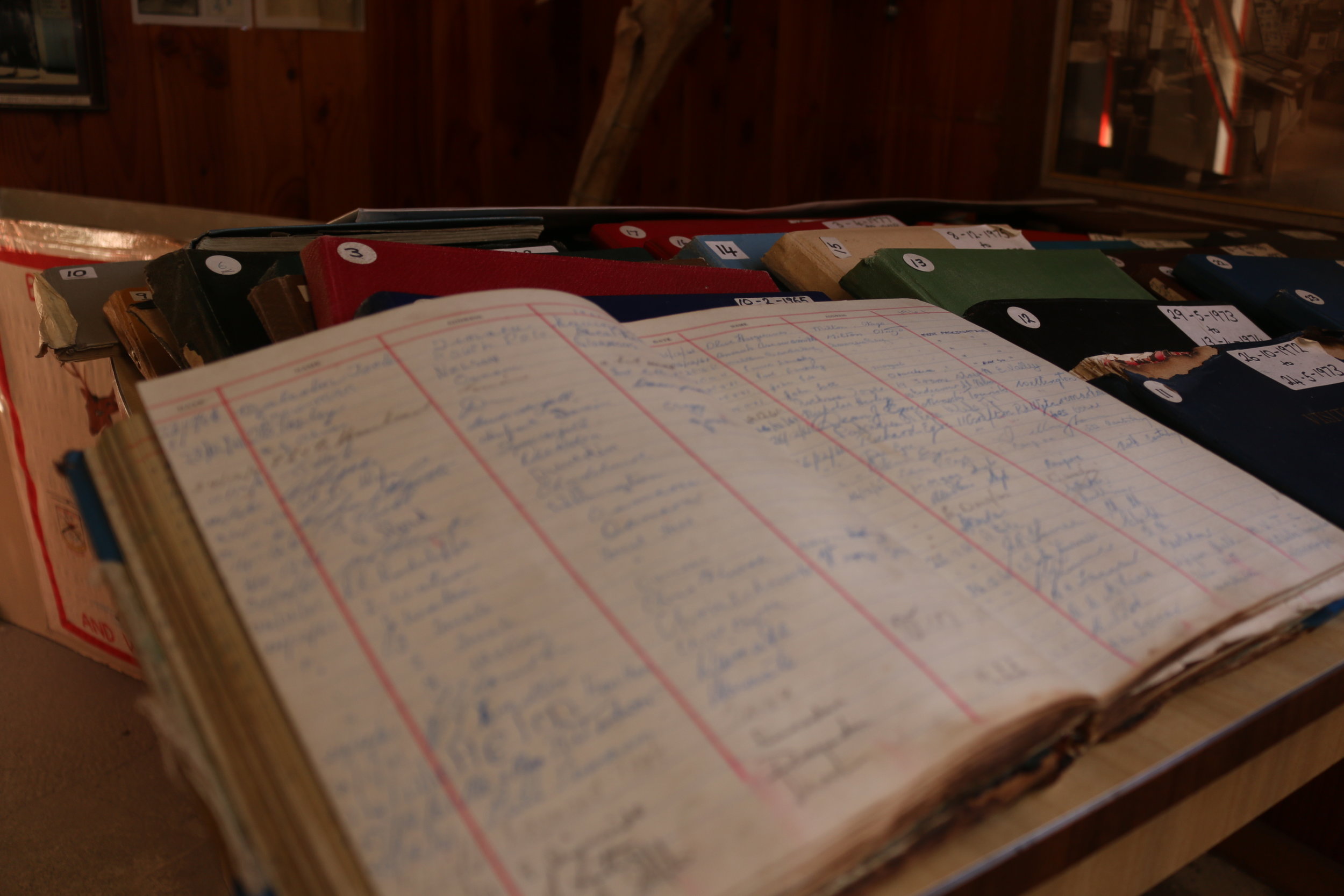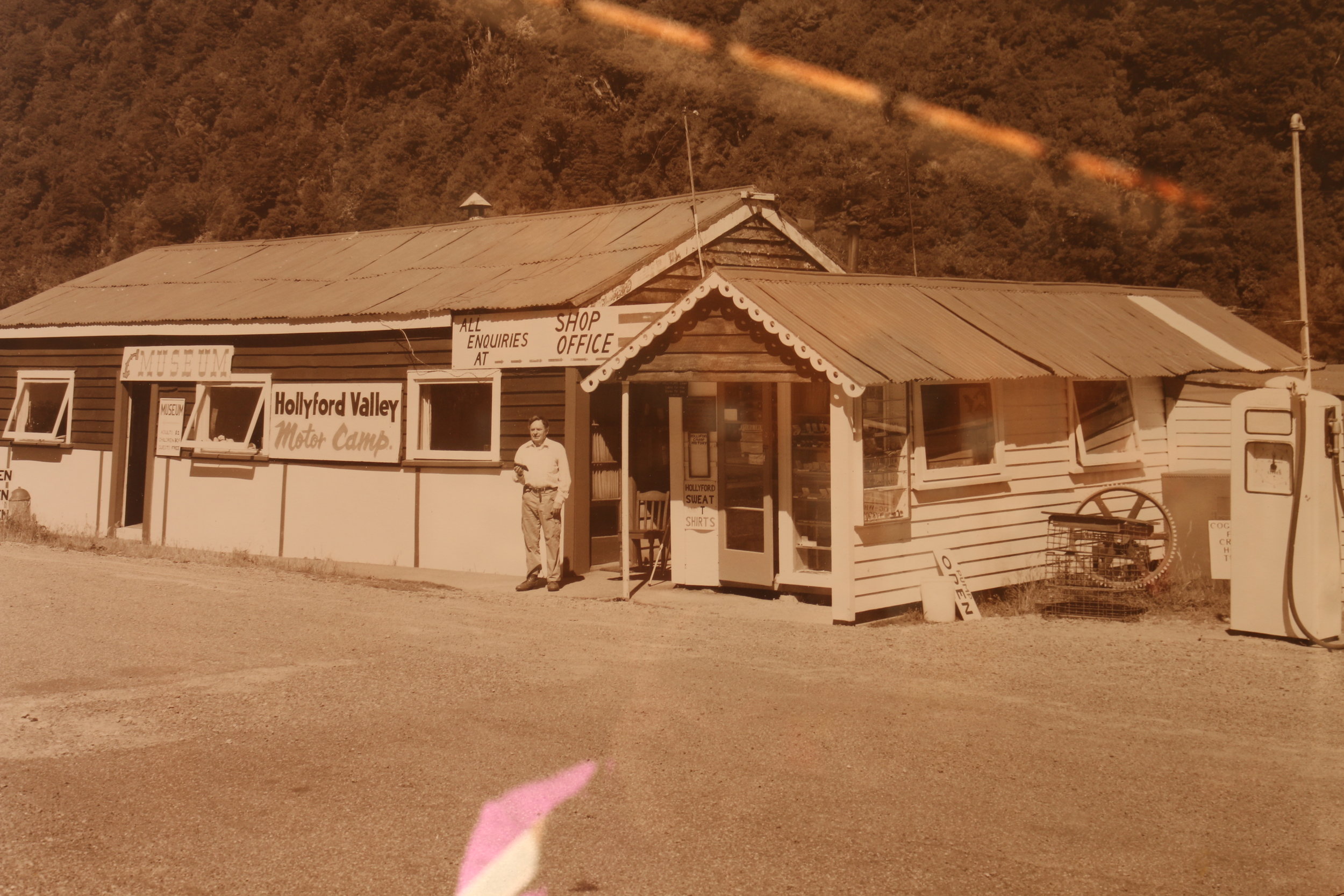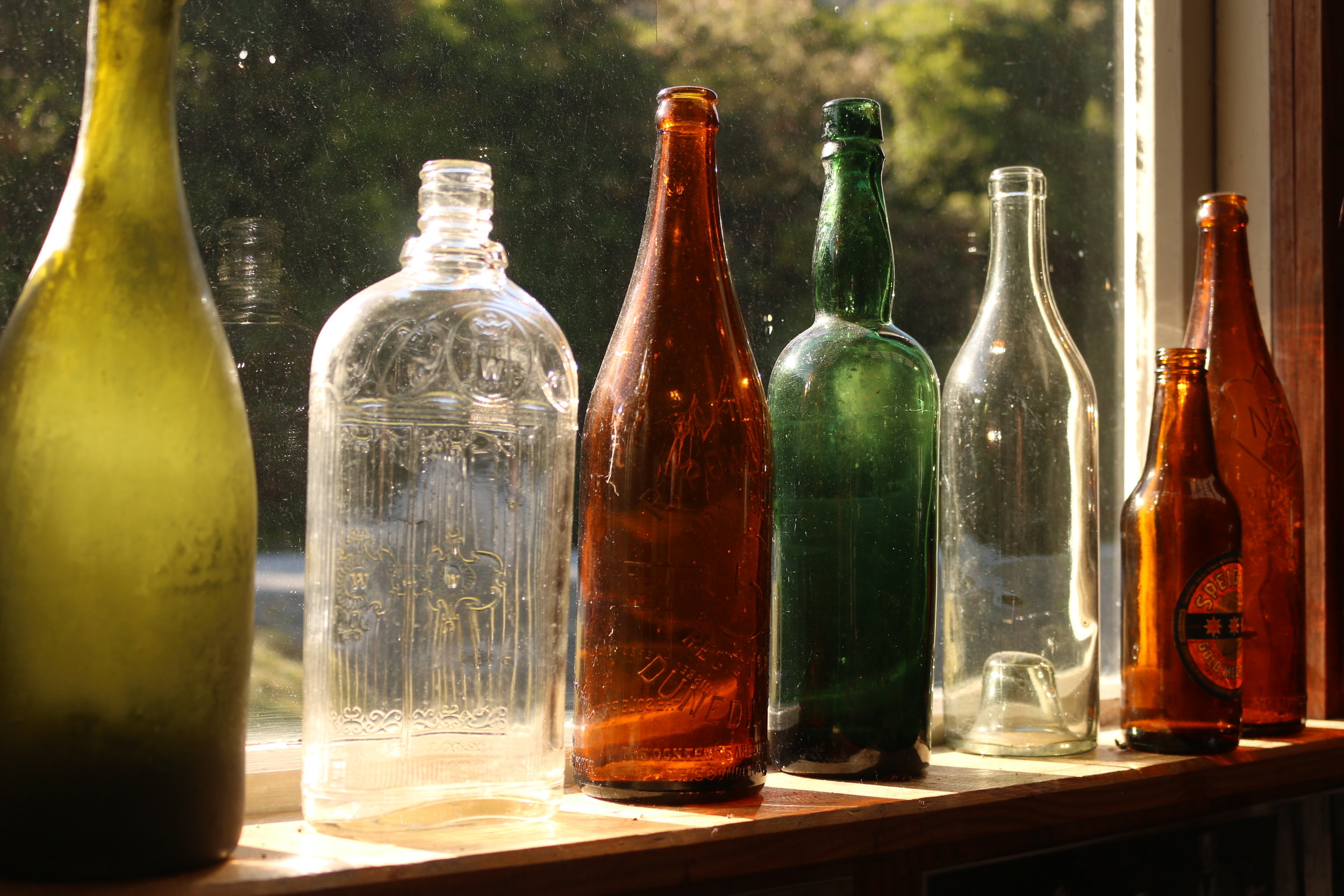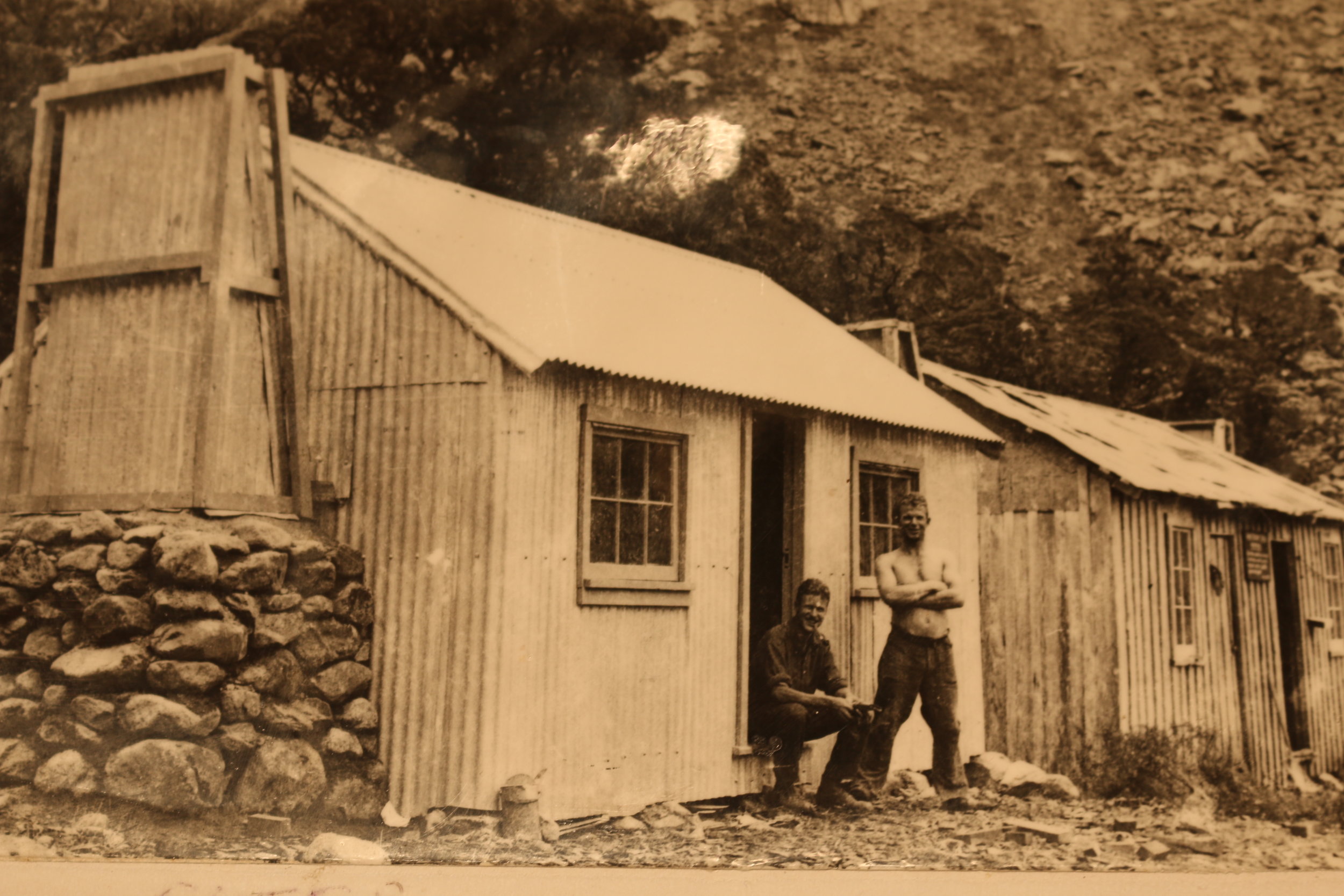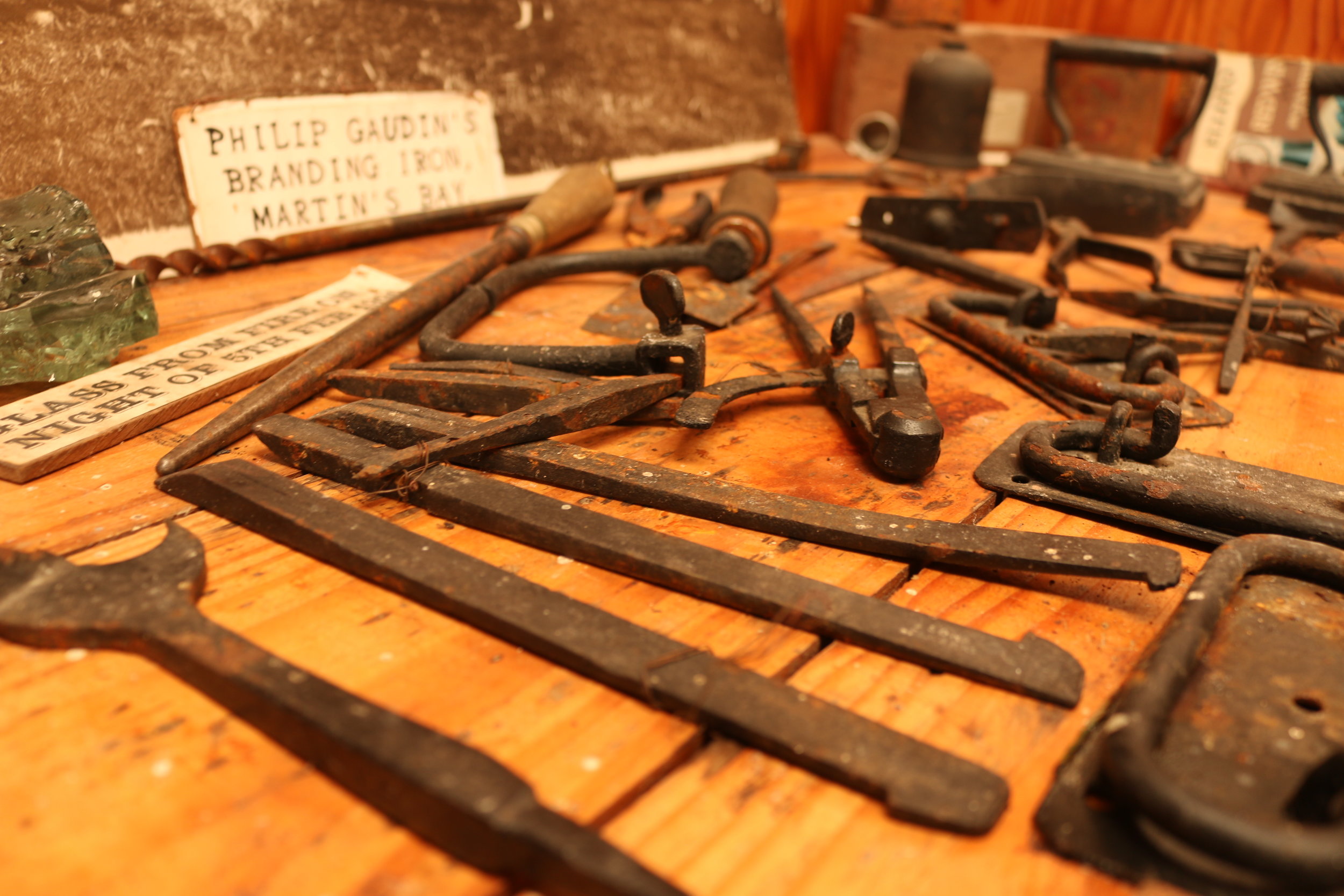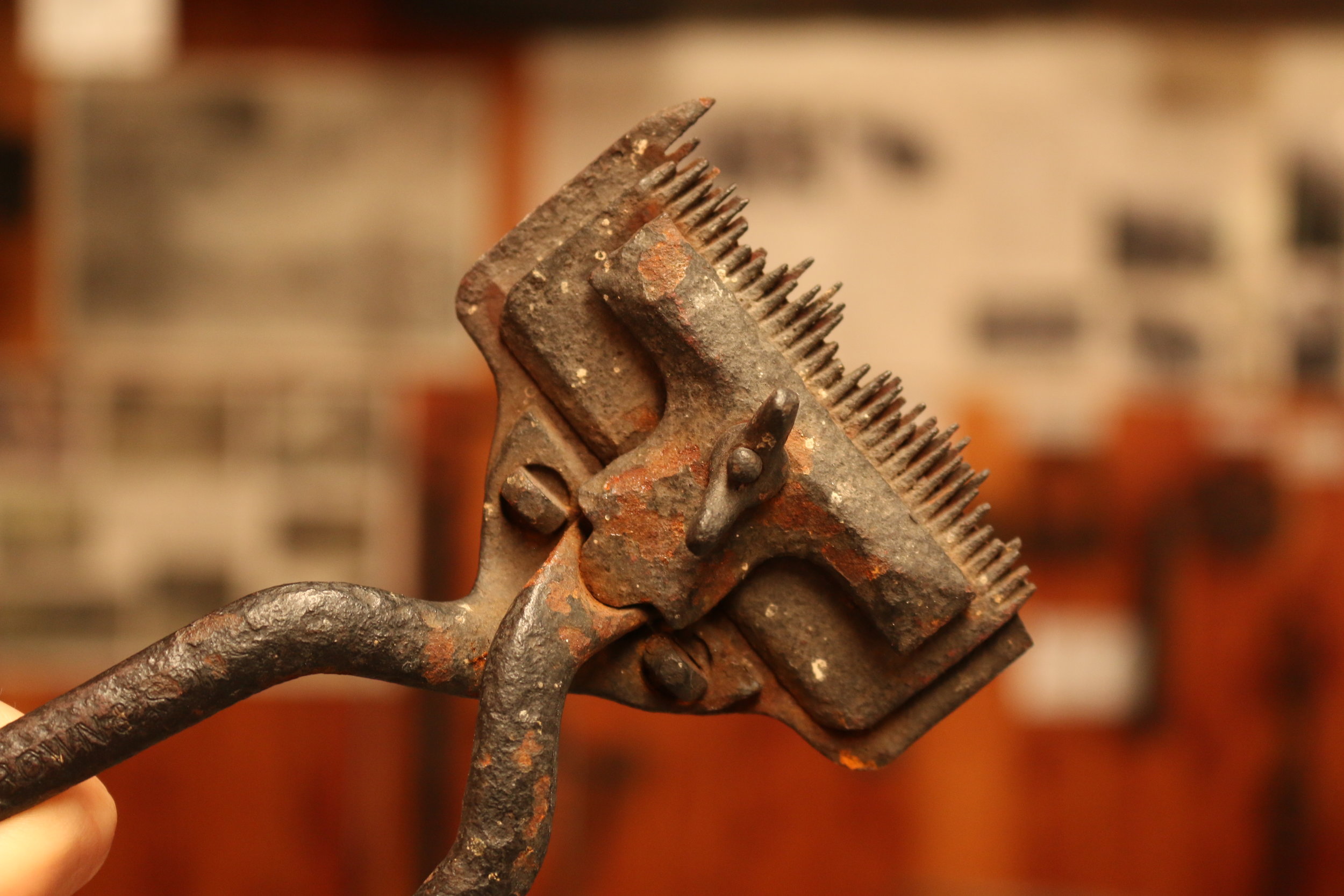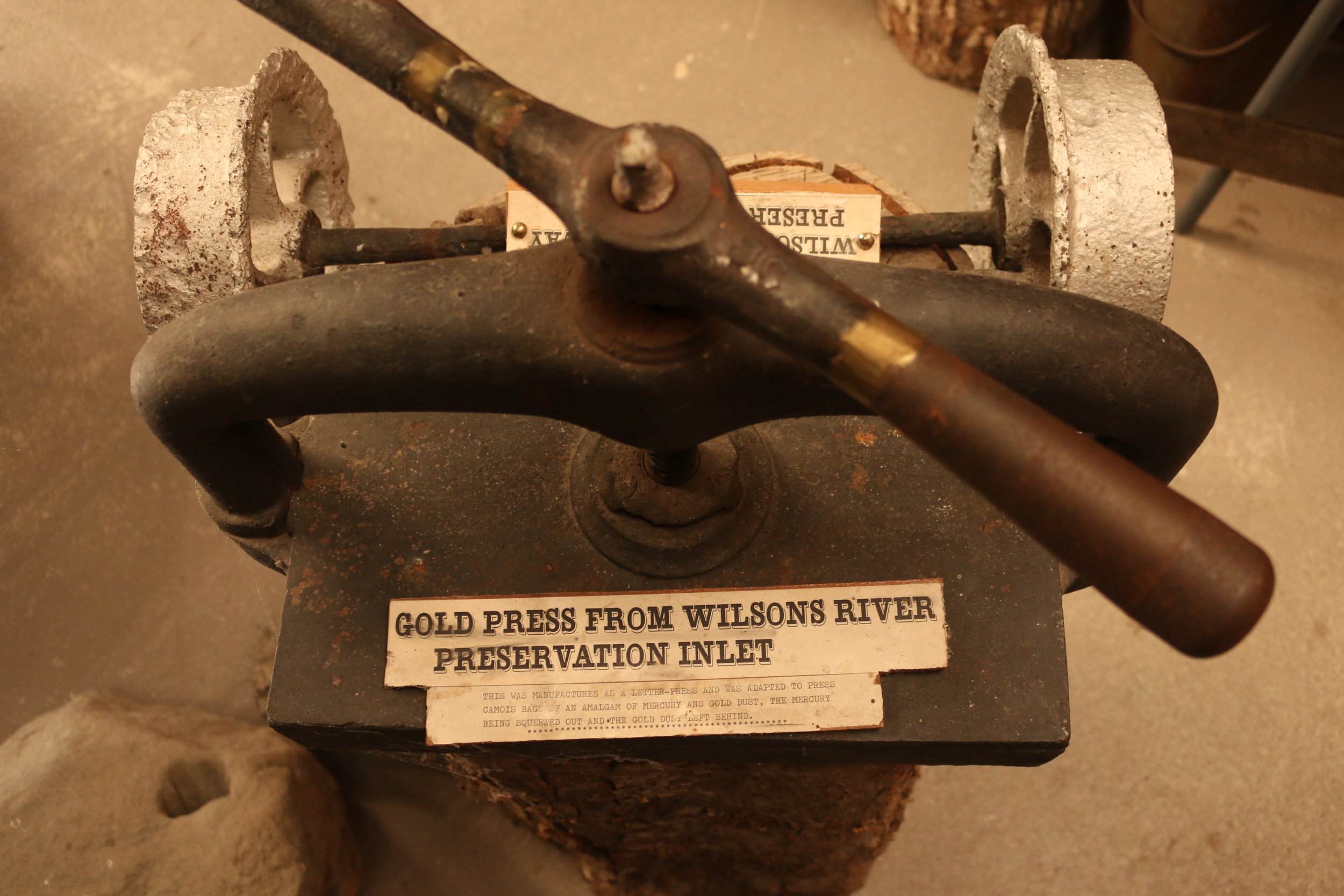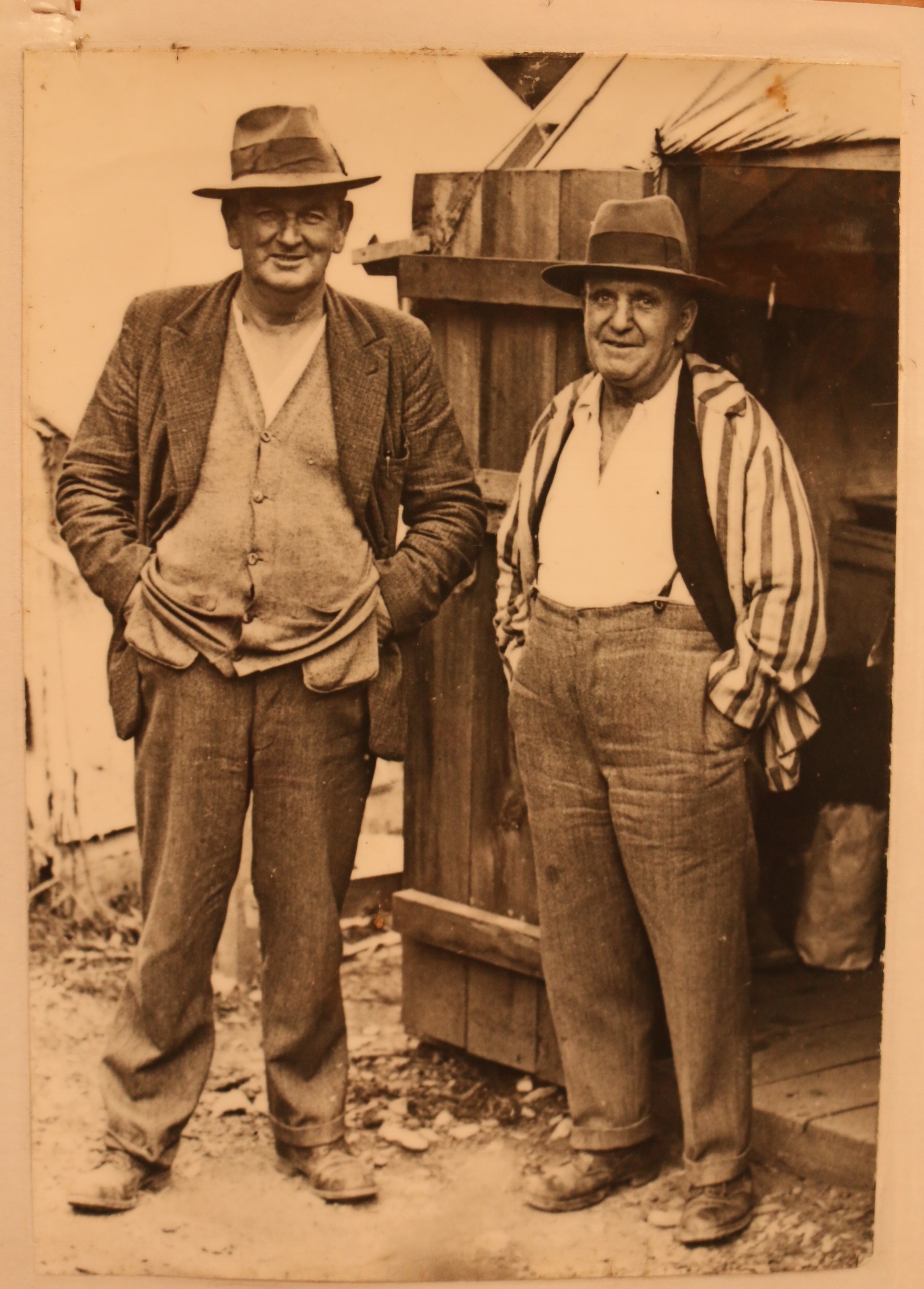“When man moves away from nature, his heart becomes hard.”
We hop into the car, and drive to find a campsite hopefully slightly less crowded than the Cascade Creek site for the night. We want to hike Lake Marion, the Lake we could see in the distance from the Key Summit Hike.
The snow caps are now melting and temporary waterfalls are cascading off the mountainside. We drive up the road and swerve around corners to stop and wait at the mouth of a long, one lane tunnel. Cut a little over one hundred years ago, it allows cars to drive straight through granite mountain base. The rock is so strong and hard, no structural supplementation is needed (they say). While we wait, a big Kea swoops down over the van, giant red wings spread eagle as it lands on our hood with a "THUNK." We get out to take a look.
Soon our light changes and we head through the tunnel. I try not to think about all the earthquakes we learned about at the museum back in Wellington.
We arrive at Gunn Camp, “The Land of Doing Without.” This is one of the last surviving camps built up during the time the Kiwis were trying to tunnel through the large mountain pass blocking access to Milford Sound. The camp is seven miles down a dirt road, nestled next to a little river. The cabins are as they always have been, and if you want to stay the night, you either need to camp in your van or experience life like the old tunnel builders experienced it. The camp includes a museum decorated with old camp memorabilia, all the guestbooks since 1952, and equipment used to dig through tunnels, build roads and survive life those many years ago.
To be kind, Camp Gunn has a “sand fly reserve”. We were relieved they keep the black flies on that side of the gate…until we realized campers are also kept on that side of the gate, too.
Once we had our home for the evening, we checked our watches and tried to decide. Is there enough time to hike Lake Marion? Three hours until sunset. The sign at the foot of the trail says: “A steady grade with some uneven areas under foot.” The sign doesn't tell us the length of the trail in miles or kilometers. Instead, it just says 1.5 hour to the lake, 3 hour return. We will be squeaking just under the wire.
We take off hiking. The first half mile has bridges and walking paths built up so tourists can easily access the waterfall areas. We knew that terrain was too good to be true, but as soon as we pass the lower bits, we find the trail climbing straight up the side of a sheer, jungly cliff and made of giant boulders, roots, mud, sticks, and rivers. The sign would have better said “A climb straight up with occasional even places to rest one foot.” But, I brought along both Moxie and Pluck. They were in the mood for a hike, so we trail ran/rock scrambled as fast as we could make it.
As we scramble along, we think and talk. What is bothering us so much about our recent tourism experience? It’s hard to put our finger on exactly the problem. Our list of complaints include: Crowds. Helicopters. Cars. Toilet paper left on trails. Harmful interactions with endangered wild life. We want everyone to be able to access and enjoy these beautiful places; but we want to do it without destroying everything we are trying to see. The way nature tourism is set up, travelers are not experiencing nature. They are experiencing a human conveyor belt in the world's largest movie scene. The essence of wilderness is gone.
Why do we camp? To “get away from it all.” And yet, we are parked in a parking lot of 150 cars and 300 humans. This is not camping. The wilderness is gone.
Signs along the trail talk about the Franz Joseph and Fox glaciers receding due to global warming - “isn’t it a shame that by 2035 these beautiful ice castles will be gone” reads the sign. Hurry! See them now while you can, just $550pp for a trip up on a fossil fuel burning helicopter. The wilderness is gone.
Only 5000 Keas left in the world, so many hit by cars. Ooh, but if I give one a cracker while I wait for my traffic light controlling tunnel access to change, I can see one up close and personal. No harm, its just one cracker! Now, Keas swoop in to land on the top of cars, hoping for some food at risk to their lives. The wilderness is gone.
National parks are so important. They are the meeting place for our society to learn to love nature. They are supposed to preserve some of the most beautiful areas of the world from corporations, profit, and exploitation to allow this generation and those that follow to remember where humanity came from. This purpose is not being well guarded. The opportunity for commercialism is too tempting. It creeps in on tour buses and helicopters, apparently, separating us from our money and nature. Travelers aren't even really looking at the nature we came to see. We are looking at our iPhone screens trying to frame the perfect shot; then we bound off down the road to a gift shop. We are placed in the vicinity of nature only to leave us hungering for something real.
Andrew and I have been in such remote places for the last year that we are probably more sensitive to all this than we used to be. Our trip in Milford Sound also coincided with our American politicians proposing regulations allowing for the sale of public land in our own beloved country. So, our distress is magnified, but likely for good reason.
As my boy Edward Abbey explains so well, we need wilderness.
“Wilderness is not a luxury but a necessity of the human spirit and as vital to our lives as water and good bread. A civilization which destroys what little remains of the wild, the spare, the original, is cutting itself off from its origins and betraying the principle of civilization itself.
”
Our park management policies should focus setting up a structure that allows for a slow wander, more quiet, more nature. Our suggestions:
(1) Close off the park to private cars and commercial busses, then install a shuttle service that runs every 10-15 minutes. Let people access the trailhead they are looking for, then let them be. They can join the next bus down the road.
(2) Require people to register to camp via tents or little pre-built cabins in a limited number of spaces. When they are full they are full. Do not cram more people into a given space than will reasonably fit. But also, don't exclude those on a budget. Keep the spaces reasonably priced and subject to first come first served reservations.
(3) Make sure toilet facilities are adequate to support the number of people you are inviting into the park space. Educate people about leaving toilet paper on the side of the trails, instruct them to carry it out with them.
(4) Educate people on the endangered wildlife in the parks. Use rangers to help people learn the harm of feeding wild animals.
(5) If there has to be a gift shop, spa hotel, or parking lot-like camping facilities, locate them outside the park in the town next door. Money charged or earned in or around parks should be used to support the park system itself.
Suggestions to Travelers:
(1) Be as least destructive as possible. Take care of your garbage. Take care of your toilet paper. (Seriously, gross.) Do not ever FOR THE LOVE OF ALL THAT'S GOOD AND HOLY carve your name or initials or pictograph or anything else into rocks, trees, or the like. Do not deface ancient artifacts like native drawings on walls.
(2) When you get the chance to be in the presence of something beautiful - stop and stare. Notice the sounds you hear, the colors, the lighting. Is there mist from the waterfall on your face? Is it cold? What makes this particular spot compelling? Sit there for a minute, don't just walk by on the conveyor belt of bus passengers, looking through your iPhone screen . Otherwise, you miss the point.
(3) Be prepared. Take adequate food and water, clothing, proper camping gear if you are staying over night. Take emergency communication devices and make sure they are charged, but plan to be self sufficient.
(4) Once you cover #3, then challenge yourself to be just a little less comfortable. Hike instead of ride. Sweat in the heat. Watch the sunset long enough that you see the stars come out. You will be glad you did.
OK. I'll get off my soapbox now.
We arrived at Marion Lake as some naked Germans scurried out to avoid being seen. We were left alone with only the sound of birdsong. The sun fell just behind the steep peaks and the lake turned into a mirror reflection. The last slant of light caught in the folds of the mountain to our right. I sat on a flat rock just a foot or two into the lake, enjoying the stillness of the water and the reflection of the grand mountain peak. This is real. It's an experience that can't be captured in the five minutes they let us off the bus then honk to put us back on.
We stayed as long as the flagging sun would let us, then we turned back to hustle down the trail. We know there is so much more to see in the Sounds area. We could probably find all sorts of beautiful exploration off the beaten tourist track. But, the road calls and with more South Island to see, we can’t linger here much longer.
“What is life? It is the flash of a firefly in the night. It is the breath of a buffalo in the wintertime. It is the little shadow which runs across the grass and loses itself in the sunset. ”



